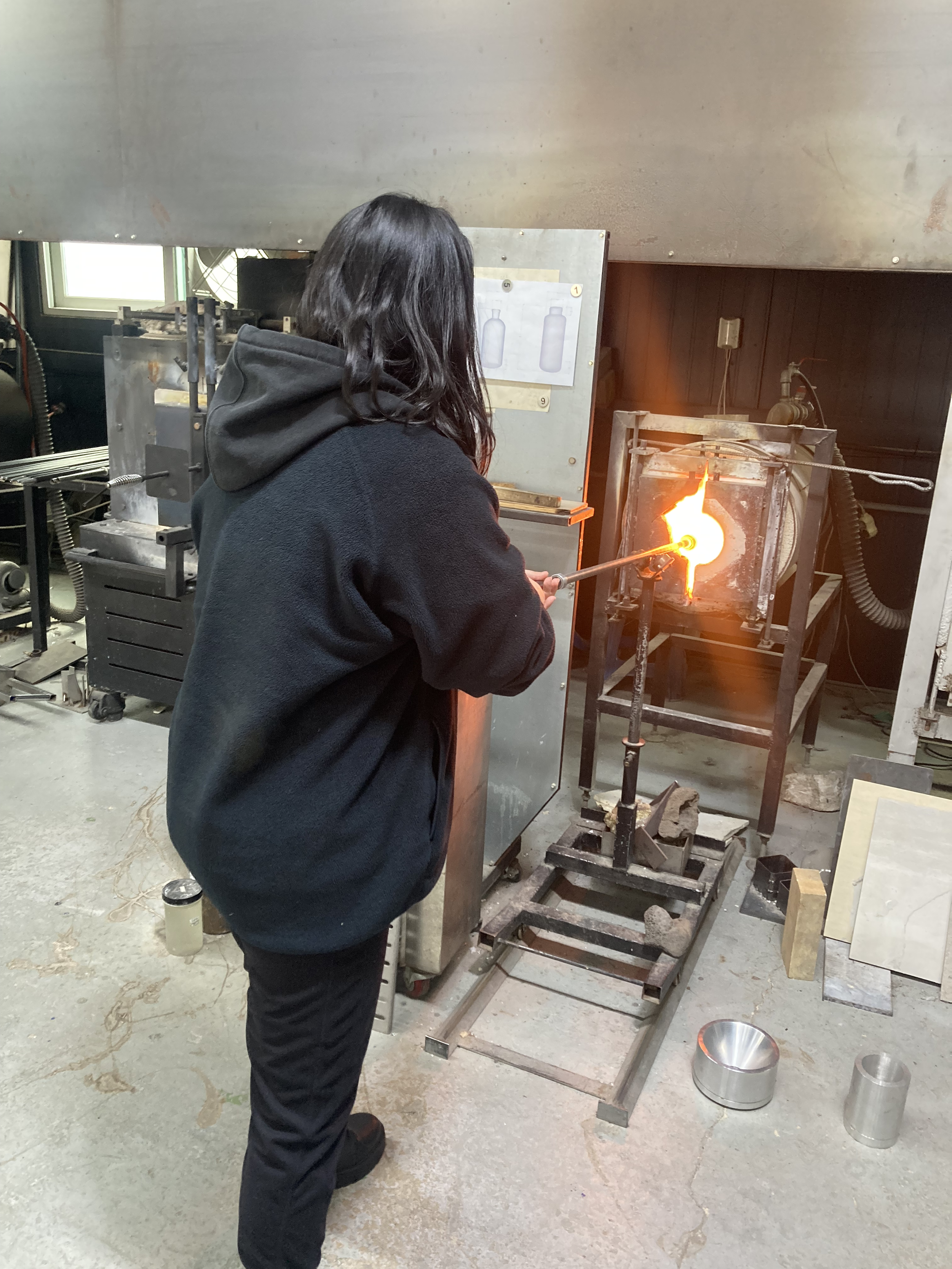BLOMs
2023.09_2024.04
Awards: Core77 Design Award 2024 (Interaction design - Student Notable)
#Experience design
BLOMs (Bio-technological Living Olfactory Memory system), is a smell memory storage system that creates a complex interplay between human experience and technological advancement, particularly in the context of how we perceive and interact with the passage of time. With advanced technology, we gain the ability to effortlessly capture, revisit, and even create moments in time. Yet, what aspects of the human experience remain elusive amidst this capability? Through this project, I aim to discover the dimension of aliveness in the process of using technology by using olfactory sense and embodiment through immersive narrative and framework with my speculative fiction, Being and Time.
The Nose.
The Nose in my project is between an organ and a tool. As an organ, the Nose has olfactory bulbs and nerves that are stimulated when they detect molecules, the substance of smell. As a tool, molecules are analyzed and saved in the Cartridge as smell memory data. These days, tools have been developed for the olfactory sense. For example, E-Nose (Electronic-Nose) collects the data of molecules and identifies smells based on the database using sensors.
The sense of olfaction is difficult to define objectively; however, it's strongly connected to our emotions and memories since the olfactory neuron system is closely connected and directly sends signals to brain regions involved in memory and emotion. In Korean, 향수(Hyang-su) can mean either scent or nostalgia. I started my curiosity about the olfactory sense from this cultural language perspective, pursuing the connection between smell and fleeting moments rather than the feeling of yearning to relive past memories.
A. Nose
B. Cartridge
C. Wearable Nose
D. Recalling Nose
A.
B.
C.
D.
Saving through Bacteria.
To save smell memory data in the bacteria storage system, put the cartridge on the bacteria hub and press the button to extract the smell memory data. In this process, the smell memory data gets ready to be saved in bacteria.
After finishing extracting, then pressing the button of the chosen Bacteria Cloud, extracted smell memory is moved to the chosen Bacteria Cloud and saved in Bacteria that were living in that Bacteria Cloud.
Based on existing bacteria shape and characteristics research, I designed the shapes of each Bacteria Cloud and made it through glasswork for visual persuasion.
For the embodiment process of pressing the button, this system used air pump motors to extract and send the smell memory data. The storage of memories technology has a long history, going back to ancient murals.
That technology now exists in the form of cell phones and AR and VR technologies but also data storage methods using bacteria that have been studied for more than a decade uses binary conversion of data and encoding it into bacterial DNA.
However, this project focused on what it means to store data in bacteria and how it can affect our daily lives. Since bacteria are alive, they have requirements for survival, such as nutrition, moisture, and temperature, which means the user needs to maintain them to keep their saved smell memory.
Based on existing bacteria shape and characteristics research, I designed the shapes of each Bacteria Cloud and made it through glasswork for visual persuasion
A. Vibrio cholera bacteria cloud
B. Diplococci bacteria cloud
C. Spirochetes bacteria cloud
D. Chain of bacilli bacteria cloud
E. Collection of single cocci bacteria cloud
Workshop and User test.










“We shall need to reawaken our experience of the world as it appears to us in so far as we are in the world through our body, and in so far as we perceive the world with our body. But by thus remaking contact with the body and with the world, we shall also rediscover ourself, since, perceiving as we do with our body, the body is a natural self and, as it were, the subject of perception.”
-Phenomenology of Perception, Merleau-Ponty-























